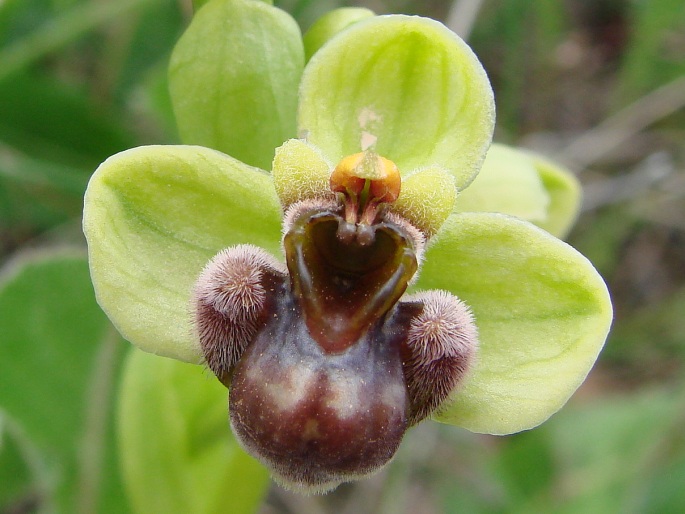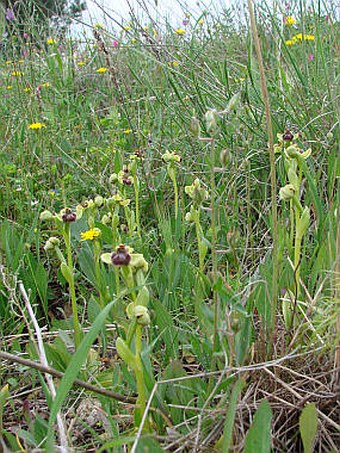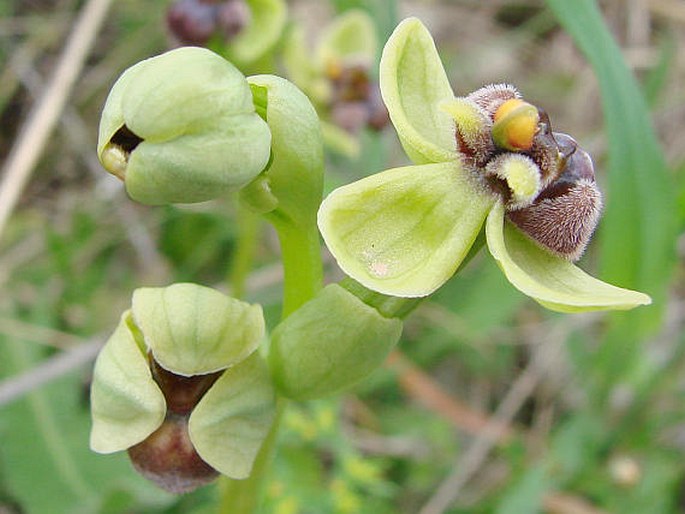Syn.: Arachnites bombyliflorus (Link) Tod., Ophrys tabanifera Willd., Ophrys distoma Biv., Ophrys hiulca Mauri, Ophrys canaliculata Viv., Ophrys labrofossa Brot.
Family: Orchidaceae Juss.

Distribution: Mediterranean region – from Spain to Turkish Anatolia, also the Canary Islands (Tenerife and Gran Canaria), the local population from Gran Canaria is sometimes referred to as Ophrys canariensis.
Ecology: It grows on rocky slopes and pastures, in shrubs (garrigue) and in forest margins, up to 900 m asl. It blooms from March to April (May).
Description: A perennial herb with an erect stem, 10–30 cm tall. Basal leaves oblong-lanceolate, acute, the cauline erect, slightly sheathing. Spike 1–5-flowered, lax; outer perianth-segments 9–12 mm, ovate, obtuse, green, sometimes whitish, the lateral patent or deflexed, inner perianth-segments c. 1/3 as long as the outer, triangular, purplish at base, greenish towards apex; labellum 8–10 × 11–13 mm, deeply 3-lobed, the lobes gibbous, brown or dark brown, partly papillose, partly glabrous, speculum scutelliform or 2-partite, bluish-violet, with paler margin. The fruit is a capsule.
Threat and protection: Ophrys bombyliflora is a protected plant by the Convention on International Trade in Endangered Species of Wild Fauna and Flora (CITES).



These images were taken in Italy, Gargano, Mattinata (April 19, 2008).


